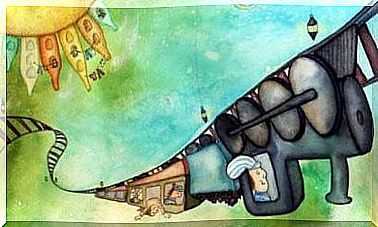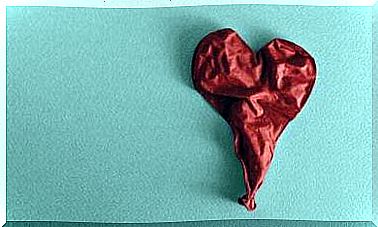Susto Or Espanto: Sudden Loss Of The Soul

Feeling that you have lost your soul, suddenly and without knowing how . In some cultures this condition is popularly explained by a s usto or an espanto – the Spanish word meaning “fright” – an unpleasant sensation somewhere between fear and surprise. It is described to those who experience it as a sudden, debilitating emotion, a thud in the heart.
We all know what it feels like when, in a situation of extreme danger, we feel that our life is threatened. This perception is generally justified. On some occasions, however, it is a suggestion because we are not really in danger.
Some people react to this stimulus with a susto : the soul leaves the body, leaving a deep unhappiness and causing a series of symptoms. Let’s see what it is.

The susto or expanded according to the DSM-5
DSM-5 places susto among the culturally characterized syndromes; it is a common pathology among the Latinos of the United States, Mexico, Central and Latin America. On the other hand, it is not recognized as a disease among Caribbean Latins.
It is a pathology attributed to a terrifying event. It would cause the detachment of the soul from the body, resulting in unhappiness, illness and difficulty in fulfilling one’s social duties.
As the diagnostic system reports, symptoms can appear at any time – days or years later – after having suffered the terrifying event. In extreme cases, susto or espanto can lead to death. Although there are no specific symptoms of susto , the symptoms typically reported by the patient are:
- Changes in appetite.
- Insomnia or sleepiness, restless sleep or nightmares.
- Sadness.
- Low self-esteem.
- Extreme sensitivity.
- Lack of motivation, apathy.
- Physically, susto presents with muscle aches, cold hands and feet, paleness, headache, abdominal pain and diarrhea.

Causes
The origin or events that trigger this condition are of a different nature. Among these we find natural phenomena, animals, supernatural entities or interpersonal relationships.
Types of susto
The DSM-5 identifies three types of susto or espanto syndrome (called foodh in the Zapotec language). Each of them is related to a different psychiatric diagnosis.
- Interpersonal Susto : feeling of loss, abandonment, fear of not being loved by family members. Symptoms – sadness, bad self-image, suicidal intentions – are related to major depression disorder in psychology.
- If susto follows a traumatic event and this has played a major role in symptom configuration and emotional processing of the experience, a diagnosis of PTSD is more appropriate.
- The susto characterized by recurrent and various physical problems – for which the subject has prompted several times health care – are considered as a disorder somatic symptoms.
It is a condition that involves genuine and intense suffering. The cultures that have documented it usually attribute a magical component to it. It is interesting, for example, to note that the Tzotziles Maya distinguish three specific cases according to the destiny of the soul. (Castaldo, 2004):
-
- Xi-el : there is no loss of the soul.
- Komel : fright following a fall. The soul leaves the body because it is captured by the earth.
- Ch’ulelal – the soul is lost and its position is not known; it may be in heaven, in another village, wandering or having been sold.
This phenomenon is not homogeneous and, of course, requires further investigation and consideration by the scientific community. Certainly the susto or espanto must be studied in its context, because we cannot forget the strong cultural component that defines it.








